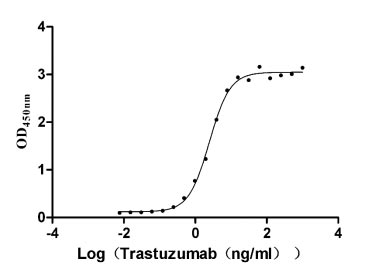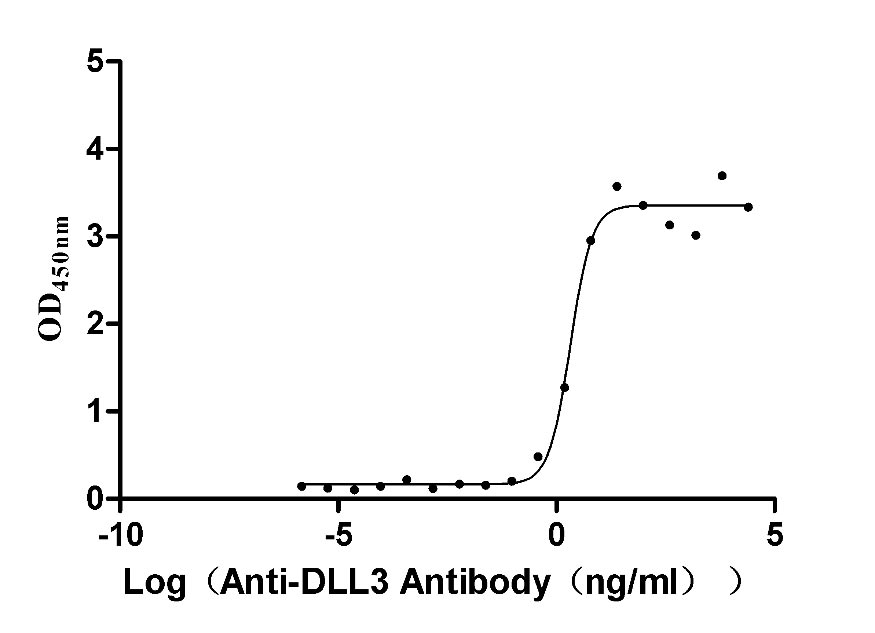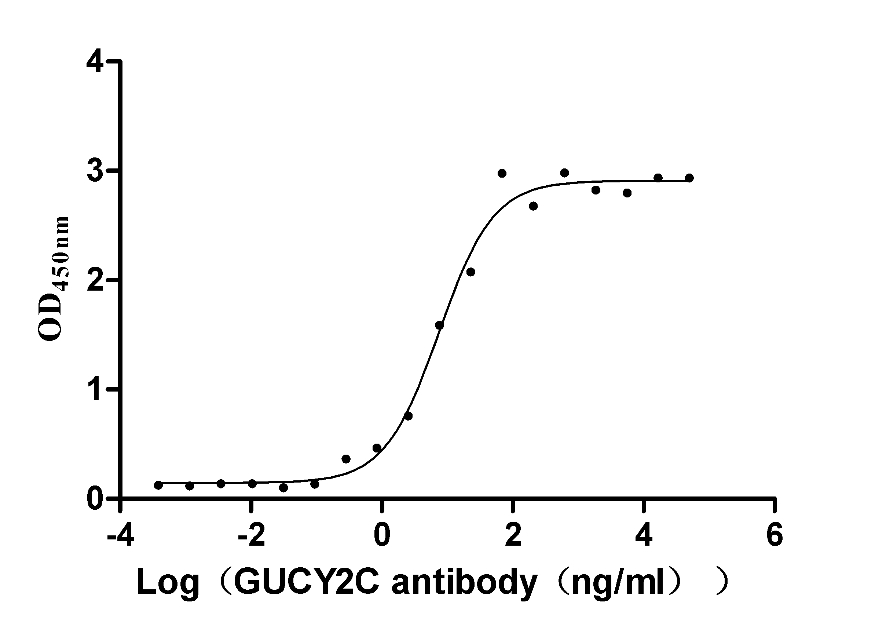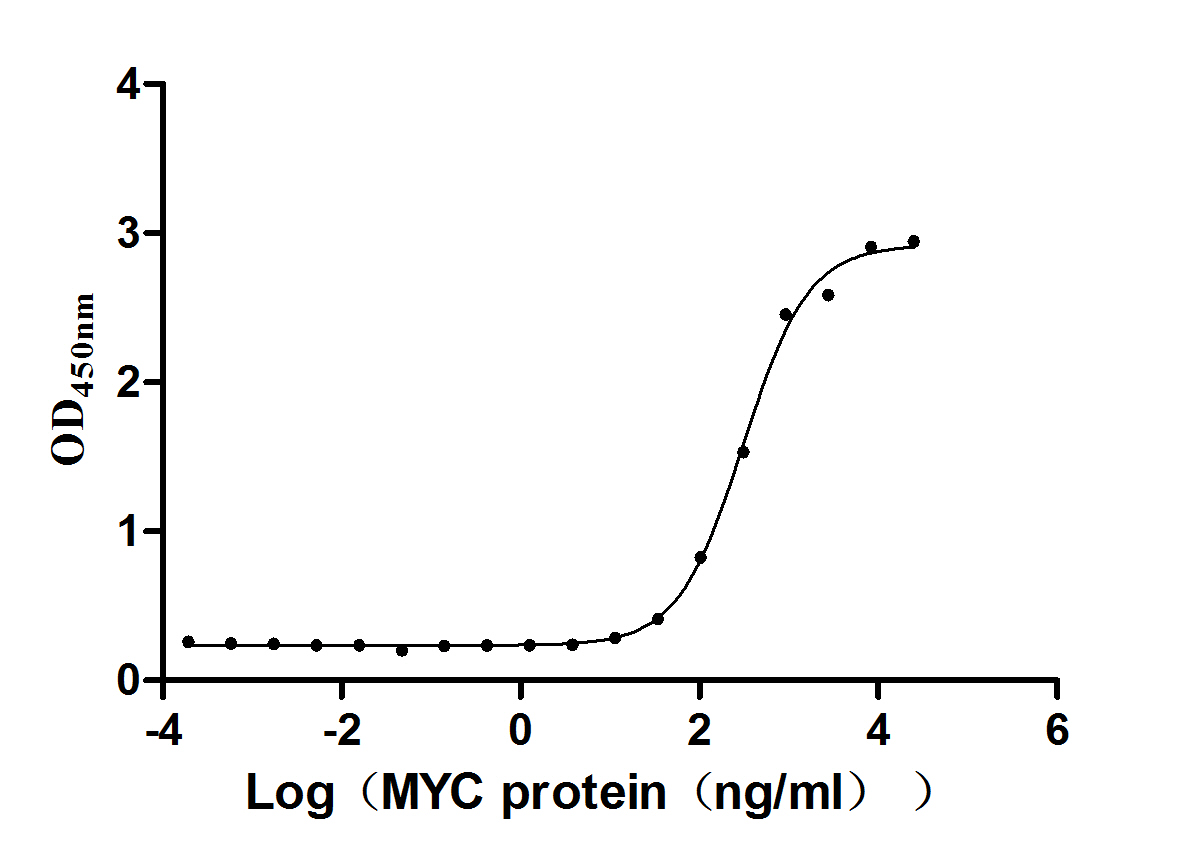Recombinant Mouse Adapter molecule crk (Crk)
-
货号:CSB-YP727036MO
-
规格:
-
来源:Yeast
-
其他:
-
货号:CSB-EP727036MO
-
规格:
-
来源:E.coli
-
其他:
-
货号:CSB-EP727036MO-B
-
规格:
-
来源:E.coli
-
共轭:Avi-tag Biotinylated
E. coli biotin ligase (BirA) is highly specific in covalently attaching biotin to the 15 amino acid AviTag peptide. This recombinant protein was biotinylated in vivo by AviTag-BirA technology, which method is BriA catalyzes amide linkage between the biotin and the specific lysine of the AviTag.
-
其他:
-
货号:CSB-BP727036MO
-
规格:
-
来源:Baculovirus
-
其他:
-
货号:CSB-MP727036MO
-
规格:
-
来源:Mammalian cell
-
其他:
产品详情
-
纯度:>85% (SDS-PAGE)
-
基因名:
-
Uniprot No.:
-
别名:Crk; CrkoAdapter molecule crk; Proto-oncogene c-Crk; p38
-
种属:Mus musculus (Mouse)
-
蛋白长度:Full Length of Mature Protein
-
表达区域:2-304
-
氨基酸序列AGNFDSEER SSWYWGRLSR QEAVALLQGQ RHGVFLVRDS STSPGDYVLS VSENSRVSHY IINSSGPRPP VPPSPAQPPP GVSPSRLRIG DQEFDSLPAL LEFYKIHYLD TTTLIEPVAR SRQGSGVILR QEEAEYVRAL FDFNGNDEED LPFKKGDILR IRDKPEEQWW NAEDSEGKRG MIPVPYVEKY RPASASVSAL IGGNQEGSHP QPLGGPEPGP YAQPSVNTPL PNLQNGPIYA RVIQKRVPNA YDKTALALEV GELVKVTKIN VSGQWEGECN GKRGHFPFTH VRLLDQQNPD EDFS
-
蛋白标签:Tag type will be determined during the manufacturing process.
The tag type will be determined during production process. If you have specified tag type, please tell us and we will develop the specified tag preferentially. -
产品提供形式:Lyophilized powder
Note: We will preferentially ship the format that we have in stock, however, if you have any special requirement for the format, please remark your requirement when placing the order, we will prepare according to your demand. -
复溶:We recommend that this vial be briefly centrifuged prior to opening to bring the contents to the bottom. Please reconstitute protein in deionized sterile water to a concentration of 0.1-1.0 mg/mL.We recommend to add 5-50% of glycerol (final concentration) and aliquot for long-term storage at -20℃/-80℃. Our default final concentration of glycerol is 50%. Customers could use it as reference.
-
储存条件:Store at -20°C/-80°C upon receipt, aliquoting is necessary for mutiple use. Avoid repeated freeze-thaw cycles.
-
保质期:The shelf life is related to many factors, storage state, buffer ingredients, storage temperature and the stability of the protein itself.
Generally, the shelf life of liquid form is 6 months at -20°C/-80°C. The shelf life of lyophilized form is 12 months at -20°C/-80°C. -
货期:Delivery time may differ from different purchasing way or location, please kindly consult your local distributors for specific delivery time.Note: All of our proteins are default shipped with normal blue ice packs, if you request to ship with dry ice, please communicate with us in advance and extra fees will be charged.
-
注意事项:Repeated freezing and thawing is not recommended. Store working aliquots at 4°C for up to one week.
-
Datasheet :Please contact us to get it.
靶点详情
-
功能:Involved in cell branching and adhesion mediated by BCAR1-CRK-RAPGEF1 signaling and activation of RAP1.; Isoform CRK-II: Regulates cell adhesion, spreading and migration. Mediates attachment-induced MAPK8 activation, membrane ruffling and cell motility in a Rac-dependent manner. Involved in phagocytosis of apoptotic cells and cell motility via its interaction with DOCK1 and DOCK4. May regulate the EFNA5-EPHA3 signaling.
-
基因功能参考文献:
- These results indicate that CCRK functions in eye development by both positively and negatively regulating the Hh pathway, and they reveal distinct requirements for Hh signaling in patterning and morphogenesis of the eyes. PMID: 29166577
- the data suggest that CCRK positively regulates the kinetics by which ciliary proteins such as Smoothened and Gli2 are imported into the cilium, and that the efficiency of ciliary recruitment allows for potent responses to Hedgehog signaling over long time periods. PMID: 28817564
- results suggest that Crk and CrkL play essential overlapping roles in fibroblast growth. PMID: 27807028
- both Crk and CrkL are required for the acquisition of cellular transformation by v-fos, whereas Crk plays a more prominent role than CrkL in v-ras-induced transformation. PMID: 25557916
- results support a model in which Dok1 phosphorylation normally suppresses localized Ras pathway activity in Crk-transformed cells via recruitment and/or activation of RasGAP PMID: 25043303
- Differential migration of CRK/CRKL-deficient T cells resulted in efficient graft-versus-leukemia responses with minimal graft-versus-host disease in mice. PMID: 25621495
- Crk1/2 and CrkL are physically linked, functionally complement each other during podocyte foot process spreading, and together are required for developing typical foot process architecture. PMID: 24499776
- Data suggest that interactions between Crk (proto-oncogene proteins c-crk) and Sos1 (Son of Sevenless homolog 1) involve electrostatic interactions at binding sites. PMID: 25207671
- Results suggest that Crk and CrkL have critical roles in cell structure and motility by maintaining cytoskeletal integrity. PMID: 24166500
- The v-Crk-myosin-1c interaction, which modulates membrane dynamics by regulating Rac1 activity, is crucial for cell adhesion and spreading. PMID: 23983611
- The s cloned SH2 domain-containing proteins they named GRBs (for growth factor receptor-bound). They identified GRB-3 as having 77% identity at the protein level and 80% similarity at the DNA level to v-crk. PMID: 1409582
- The s cloned and sequenced the avian sarcoma virus CT10 from infected QT6 quail cells then demonstrated that the protein p47 phosphorylates tyrosine residues and can modulate activity of tyrosine kinases. They name the oncogene crk for CT10 regulator of kinase. PMID: 2450282
- Data show a critical role for Crk and Crk-L downstream from Dok-7 in presynaptic and postsynaptic differentiation. PMID: 21041412
- SOS1 is essential for CrkI-induced fibroblast transformation, and also reveal a surprising negative role for Abl kinases in Crk transformation. PMID: 20729917
- This study provides evidence for a potential role of CrkII in integrating signals for breast cancer progression in vivo, which has important implications for elevated CrkII observed in human cancer. PMID: 20008144
- A 5th member of the Crk family of adaptor proteins, CrkIII, was cloned; it is identical to CrkII until the 2d of its two SH3 domains, which is disrupted partway through, resulting in a nonfunctional domain & a unique C-terminal sequence PMID: 12894221
- IFN-zeta/limitin induced weaker phosphorylation of Crk and lower induction of Daxx than IFN-alpha PMID: 15781341
- These data indicate that Crk is involved in cardiac and craniofacial development and that it plays an essential role in maintaining vascular integrity during embryonic development. PMID: 16880535
- These data suggest that Dock180/ELMO and CrkII act as two evolutionarily conserved signaling submodules that coordinately regulate engulfment. PMID: 17304244
- CrkII-DOCK180 is also responsible, at least in part, for the effects of Fcgamma receptors implies PMID: 17308335
- Ab1 functions as a negative regulator of Met-induced cell motility via phosphorylation of the adaptor protein CrkII. PMID: 17399949
- v-Src tumors exhibited aggressive growth and extensive angiogenesis, while c-Src tumors grew more slowly accompanied by the induction of hematomas. PMID: 18173743
- The Crk family proteins are important downstream components of the reelin signaling pathway in the regulation of postnatal hippocampal dendritogenesis. PMID: 18477607
- Crk and CrkL play essential overlapping functions in the Reelin signaling pathway. PMID: 19074029
显示更多
收起更多
-
亚细胞定位:Cytoplasm. Cell membrane.
-
蛋白家族:CRK family
-
组织特异性:Ubiquitous.
-
数据库链接:
KEGG: mmu:12928
STRING: 10090.ENSMUSP00000017920
UniGene: Mm.280125
Most popular with customers
-
Recombinant Human Receptor tyrosine-protein kinase erbB-2 (ERBB2), partial (Active)
Express system: Mammalian cell
Species: Homo sapiens (Human)
-
Recombinant Macaca fascicularis Delta-like protein 3 (DLL3), partial (Active)
Express system: Mammalian cell
Species: Macaca fascicularis (Crab-eating macaque) (Cynomolgus monkey)
-
Recombinant Human Heat-stable enterotoxin receptor (GUCY2C), partial (Active)
Express system: Mammalian cell
Species: Homo sapiens (Human)
-
Recombinant Human papillomavirus type 16 Protein E7 (E7) (Active)
Express system: E.coli
Species: Human papillomavirus type 16
-
Recombinant Macaca fascicularis Claudin (CLDN18)-VLPs (Active)
Express system: Mammalian cell
Species: Macaca fascicularis (Crab-eating macaque) (Cynomolgus monkey)
-
Recombinant Mouse Claudin-18 (Cldn18)-VLPs (Active)
Express system: Mammalian cell
Species: Mus musculus (Mouse)
-
Recombinant Human Claudin-6 (CLDN6)-VLPs (Active)
Express system: Mammalian cell
Species: Homo sapiens (Human)
-
Recombinant Human Microtubule-associated protein tau (MAPT) (Active)
Express system: Mammalian cell
Species: Homo sapiens (Human)







-AC1.jpg)
-AC1.jpg)
-AC1.jpg)










